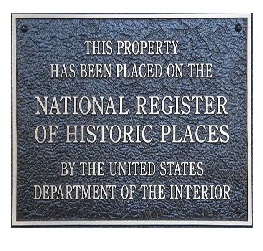The Heritage of Historical Properties
 Historic properties attract a special type of buyer because of the “pride of ownership,” grant money that may be available for restoration that does not have to be paid back, low-interest loans, and certain other tax advantages. However, owning, renovating, and restoring a historical home, is challenging because the costs of making renovations may be very high and there are strong restrictions on what can be done to modify a historic property.
Historic properties attract a special type of buyer because of the “pride of ownership,” grant money that may be available for restoration that does not have to be paid back, low-interest loans, and certain other tax advantages. However, owning, renovating, and restoring a historical home, is challenging because the costs of making renovations may be very high and there are strong restrictions on what can be done to modify a historic property.
Historic properties may be owned by private owners, government organizations, or non-profits entities, such as many museums are.
Qualification as a Historic Property
Historic Properties are qualified as such if they are found listed in the National Register of Historic Places and they are approved by the local historical agency to become a “landmark” property. Usually, there is a beautiful bronze plaque on the front outside of the property that is either mounted on the building or part of signage that indicates the property is listed in the National Register.
It is also possible to buy a home that is not listed in the National Register and make an application for a listing. The property will be approved only if the home is architecturally significant and/or has some historical importance. Most of the homes in the National Register are at least fifty years old. Some are much older.
Restrictions for a Historical Property
If the historical property has a private owner, being listed in the National Register does not convey any public rights to the property. A listing does not cause government acquisition of the property through eminent domain proceedings and there is no requirement to allow public access to the property. There are no restrictions on the use, sale, or transfer of historical properties that have private owners, as long as the property has not made any use of U.S. Federal monies.
However, if the property uses federal monies, such as getting a grant from the U.S. government, then any changes in the property require approval and comment by the Advisory Council on Historic Preservation. Additionally, local restrictions usually apply and renovations need approval from the local and state authorities from the local Historical Preservation Office.
Benefits of Owning a Historical Property
A property listed in the National Register is included in the Federal planning for preservation of historical properties. It may also qualify for designation as a landmark with the state Historical Preservation Office and become part of a local historical district. Some of these properties may become extremely valuable if they are in a popular location in a historical district.
In addition to the pride of ownership, the property may qualify for a 20% investment tax credit if the property is income producing, such as being a commercial operation or a residential rental unit.
Grant money is sometimes available to help with the restoration. If the property is owned by a qualified non-profit organization then donations to help with restoration are tax-deductible.
Straight-line depreciation is another tax deduction for residences over a 27 ½ year period and for commercial properties over 31 ½ years.
Summary
Many find ownership of a historical property to be very rewarding. Getting a qualified professional inspection of the property, where everything is checked extremely carefully is critical before buying the property. It is important to have patience and flexibility when considering the challenges of a renovation project.
References:
National Register of Historic Places
www.nps.gov/nr
How to List a Property with the National Register
www.nps.gov/nr/national_register_fundamentals.htm
Advisory Council on Historic Preservation
www.achp.gov